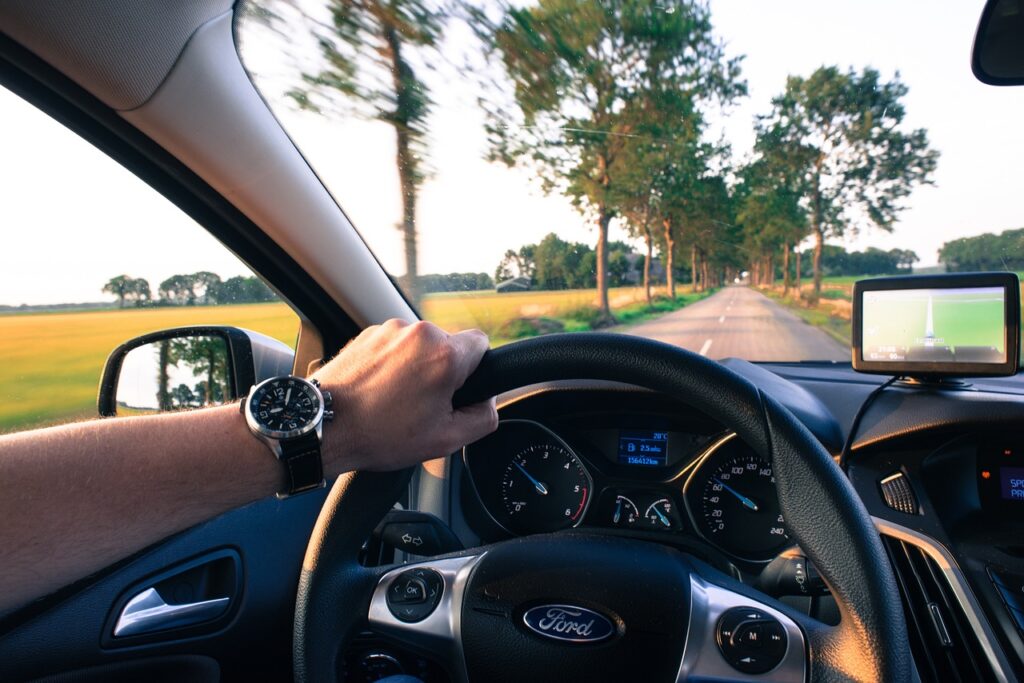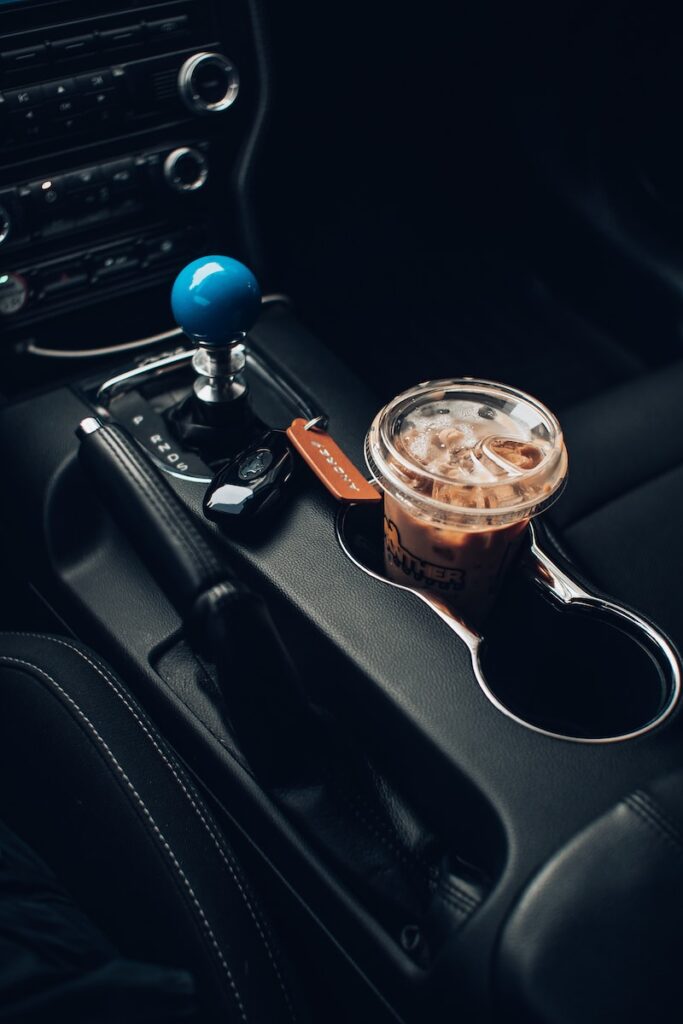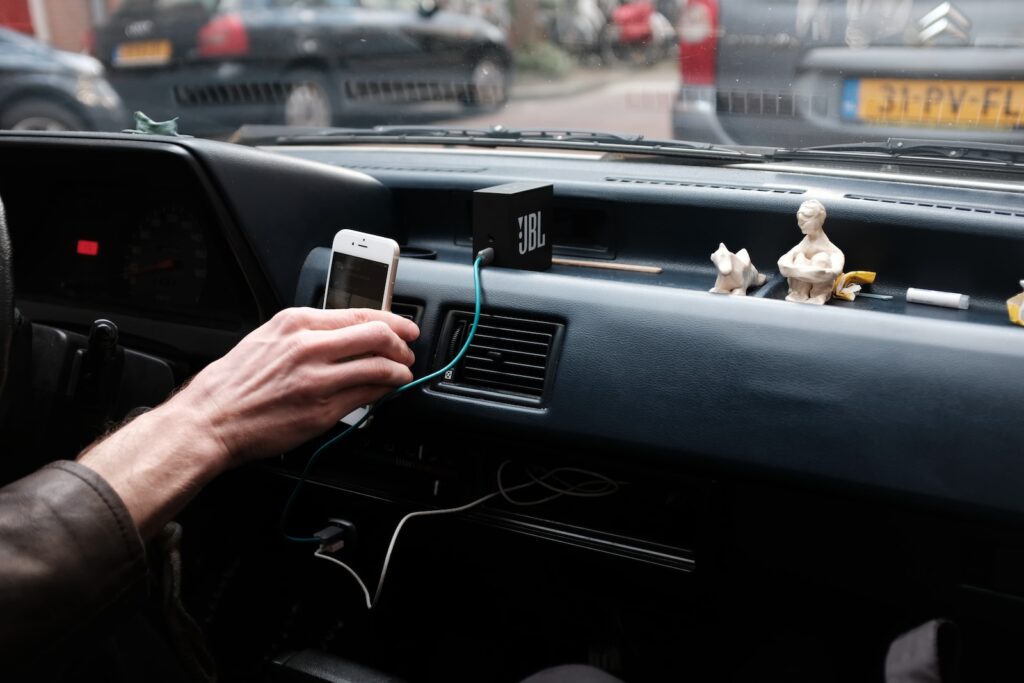Car commuting can be a significant source of stress, impacting our mental and physical well-being. The daily grind of traffic congestion, aggressive drivers, and time pressures can take a toll on our overall experience. However, there are effective strategies to minimize driving stress and transform your daily commute into a more pleasant and peaceful journey.
With these strategies, we will explore seven practical tips to help you navigate through the challenges of commuting, reduce stress levels, and enhance your overall well-being. From adopting a proactive mindset and practicing mindfulness to optimizing your route and creating a soothing environment inside your vehicle, we’ve got you covered. Let’s dive in and discover how you can make your daily commute a stress-free experience.
Table of Contents
1. Adopt a Proactive Mindset
Adopting a proactive mindset is a key strategy for minimizing driving stress. When it comes to your daily commute, preparation is paramount. By planning your journey in advance, you can take proactive steps to avoid unnecessary stress. Start by staying informed about current traffic conditions and any potential roadblocks or construction zones along your route. Checking reliable traffic updates or using navigation apps can provide valuable insights into the road ahead. By planning ahead and preparing in advance, you can significantly reduce potential obstacles and make your morning journey more seamless.

Allowing extra time for unexpected delays is crucial. By factoring in buffer time, you create a cushion that reduces the likelihood of feeling rushed or anxious. Consider the average travel time and add a buffer to accommodate any unforeseen circumstances. This approach helps alleviate the pressure of being pressed for time and allows you to approach your commute with a calmer mindset.
By taking a proactive approach, you gain a sense of control over your commute. Instead of feeling at the mercy of traffic or unforeseen events, you are prepared to handle any challenges that may arise. This proactive mindset empowers you to navigate through stressful situations with more ease and resilience.
2. Practice Mindfulness
Practicing mindfulness during your daily commute can have a profound impact on reducing driving stress. As you embark on your journey, make a conscious effort to be fully present in the moment. Begin by focusing on your breath, inhaling and exhaling deeply, allowing yourself to ground in the present.
Bring your attention to the sensations in your body as you drive. Notice the feeling of your hands on the steering wheel, the pressure of your feet on the pedals, and the movements of your body. By connecting with your physical sensations, you bring yourself into the present moment and away from any stressful thoughts or worries.

Embrace a sense of acceptance during your drive. Let go of frustrations or negative thoughts that may arise. Instead of resisting the traffic or becoming irritated by external factors, practice acceptance of the situation. Recognize that you have limited control over external circumstances but can choose how you respond internally.
Engage your senses to enhance your mindfulness practice. Notice the sights around you, the changing scenery, and the beauty of your surroundings. Listen to the sounds of the road, the hum of the engine, and the ambient noises. Take in the smells, whether it’s the scent of nature or the aroma from nearby cafés.
3. Optimize Your Route
Optimizing your route is a crucial strategy for minimizing driving stress during your daily commute. By finding the most efficient and less congested route, you can create a smoother and more enjoyable driving experience.
Start by utilizing navigation apps or online maps to explore alternative routes, like Google Maps or Waze. These tools provide real-time traffic information and can help you identify potential congestion points or roadblocks along your usual route. Consider adjusting your departure time to avoid peak hours and heavy traffic.

Be open to trying different routes to find the one that works best for you. Even if it means taking a slightly longer route, if it helps you avoid stressful intersections or heavy traffic areas, it can significantly reduce your driving stress. Sometimes, a scenic or less-traveled route can offer a more peaceful and relaxed driving experience.
Keep an eye on traffic patterns and stay informed about any ongoing roadworks or events that may affect your route. Planning ahead and being aware of potential disruptions can help you make informed decisions about which route to take.
Remember that the purpose of optimizing your route is not only to save time but also to minimize the stress and frustration that can arise from being stuck in traffic or facing challenging driving conditions. By taking proactive steps to find the most efficient and stress-free route, you can transform your daily commute into a more pleasant and enjoyable experience.
4. Create a Soothing Environment
Creating a soothing environment inside your vehicle can have a significant impact on reducing driving stress during your daily commute. By incorporating simple yet effective elements, you can transform your car into a tranquil oasis.
One way to create a calming atmosphere is by playing soothing music or listening to audiobooks that you find enjoyable. Select tracks or genres that promote relaxation and help you unwind. Soft instrumental melodies, nature sounds, or guided meditation recordings can provide a sense of serenity and make your drive more enjoyable.

Consider using essential oils or aromatherapy diffusers to infuse your car with pleasant scents. Scents like lavender, chamomile, or citrus can have a calming effect and help alleviate stress. Use essential oil diffusers designed for cars or place a few drops of essential oil on a cotton ball and place it in a cup holder or vent area.
Keeping your car clean and organized is essential for creating a soothing environment. Remove clutter, unnecessary items, and trash regularly. Utilize organizers, storage bins, or car-specific accessories to maintain a tidy and organized space. A clean and clutter-free car promotes a sense of calm and relaxation.
Remember to adjust the temperature inside your vehicle to create a comfortable environment. Extreme temperatures can contribute to discomfort and add to driving stress. Set your car’s climate control system to a temperature that suits your preference, ensuring a pleasant and soothing drive.
5. Practice Defensive Driving
When it comes to minimizing driving stress and prioritizing your safety, practicing defensive driving techniques is crucial. By adopting a defensive driving approach, you can navigate the road with confidence and reduce stress levels during your daily commute.
One key aspect of defensive driving is remaining alert and attentive at all times. Keep your focus on the road ahead and avoid distractions such as using your phone or engaging in activities that take your attention away from driving. By staying alert, you can anticipate potential hazards and react promptly, mitigating stressful situations.
Maintaining a safe following distance from the vehicle in front of you is another essential defensive driving technique. This allows you to have enough time to react and stop safely if the vehicle ahead suddenly brakes or encounters an obstacle. By keeping a safe distance, you create a buffer zone that helps reduce the likelihood of accidents and gives you peace of mind.

Anticipating potential hazards is a key component of defensive driving. Pay attention to the behavior of other drivers, pedestrians, and cyclists around you. Stay vigilant for sudden lane changes, merging vehicles, or pedestrians crossing the road. By being aware of your surroundings and predicting potential dangers, you can proactively adjust your driving and minimize stressful situations.
It’s important to avoid aggressive behaviors while driving, such as tailgating or making sudden lane changes. Aggressive driving not only increases the risk of accidents but also heightens stress levels. Instead, practice patience, maintain a steady pace, and use your turn signals to communicate your intentions to other drivers. By promoting a calm and cooperative driving environment, you contribute to reducing overall driving stress.
6. Utilize Stress-Relief Techniques
During your daily commute, it’s important to have a repertoire of stress-relief techniques at your disposal. These techniques can help you relax, stay calm, and effectively manage driving stress.
One effective technique is deep breathing exercises. As you drive, take slow, deep breaths in through your nose and exhale slowly through your mouth. Deep breathing helps slow down your heart rate and promotes a sense of relaxation. Focus on the rhythm of your breath, allowing it to anchor you in the present moment.
Another valuable stress-relief technique is progressive muscle relaxation. Start by tensing and then releasing each muscle group in your body, starting from your toes and moving up to your head. As you tense your muscles, hold the tension for a few seconds before releasing and letting go. This technique helps release built-up tension and promotes a sense of physical and mental relaxation.

Visualization techniques can also be beneficial in reducing driving stress. Imagine yourself in a peaceful and serene place, such as a beach or a quiet garden. Visualize the sights, sounds, and sensations of this peaceful environment. By immersing yourself in this visualization, you can shift your focus away from stressors and create a calming mental space.
Experiment with different stress-relief techniques to find what works best for you. It could be a combination of deep breathing exercises, progressive muscle relaxation, visualization, or other techniques such as listening to calming music or practicing affirmations. Incorporate these techniques into your commute routine, allowing them to become a natural part of your daily driving experience.
7. Find Joy in the Journey
Amidst the hustle and bustle of your daily commute, it’s essential to find joy in the journey and embrace the small moments that can make your drive more enjoyable. By shifting your focus and cultivating a positive mindset, you can significantly reduce driving stress and create a fulfilling experience.
Take a moment to appreciate the beauty of nature during your commute. Whether it’s the vibrant colors of the sunrise or the serene scenery along your route, allowing yourself to soak in the natural surroundings can bring a sense of peace and tranquility. Open your windows, feel the fresh air, and let nature’s beauty uplift your spirits.

Another way to infuse joy into your commute is by engaging in uplifting activities. Listen to podcasts or audiobooks that inspire and motivate you. Immerse yourself in captivating stories or educational content that can stimulate your mind and make the journey more engaging. Singing along to your favorite songs or creating a playlist of uplifting music can also uplift your mood and bring a sense of joy to your drive.
Engaging in activities that bring you joy can also make your commute more enjoyable. Sing along to your favorite songs, listen to a playlist that boosts your mood, or practice gratitude by reflecting on things you’re thankful for. Find ways to incorporate moments of joy and positivity into your commute, whether it’s through music, laughter, or mindfulness exercises.
By consciously shifting your focus to the positive aspects of your commute, you can reframe the experience and reduce driving stress. Embrace the opportunity to enjoy moments of solitude, engage in self-reflection, or simply savor the quiet moments of tranquility. By finding joy in the journey, you transform your commute into a more fulfilling and pleasurable part of your day.
Conclusion
Minimizing driving stress on your daily commute is possible with the right strategies and mindset. By adopting a proactive approach, practicing mindfulness, optimizing your route, creating a soothing environment, practicing defensive driving, utilizing stress-relief techniques, and finding joy in the journey, you can transform your commute into a stress-free and even enjoyable experience. Implement these strategies and experience the difference it can make in your daily life. Remember, your well-being matters, even during your daily commute.
FAQ
Why is driving so stressful for me?
Driving can be stressful for many individuals, including yourself, due to a variety of reasons. It could be the heavy traffic that often leaves you feeling trapped and frustrated. The constant pressure of meeting deadlines and navigating through crowded streets can add to the stress. Perhaps you have had past negative experiences or lack confidence in your driving abilities, causing anxiety to creep in. Understanding these personal triggers and implementing stress-reduction techniques tailored to your needs can help alleviate the driving stress and make your journeys more enjoyable and relaxed.
Is it normal to be stressed while driving?
Yes, it is normal to experience stress while driving. The combination of factors such as traffic congestion, time pressure, and the need for constant alertness can contribute to feelings of stress and anxiety. Additionally, past negative experiences or a lack of confidence in driving skills can amplify these feelings. However, it is important to manage and reduce driving stress through various techniques, as prolonged and excessive stress while driving can have negative impacts on mental and physical well-being. Remember, everyone’s tolerance for driving stress may vary, and finding effective coping strategies can help create a calmer and more comfortable driving experience.
How can I calm my stress while driving?
To calm your stress while driving, there are several effective techniques you can try. Practice deep breathing exercises, listen to soothing music or audiobooks, and create a pleasant environment in your vehicle. Utilize stress-relief techniques like progressive muscle relaxation and visualization. Additionally, adopting a proactive mindset, optimizing your route, and practicing defensive driving can help reduce stress.








